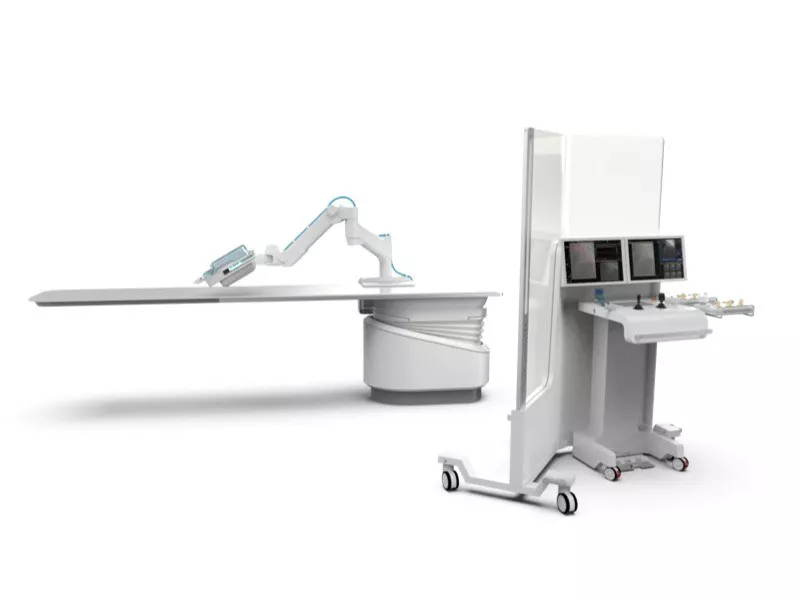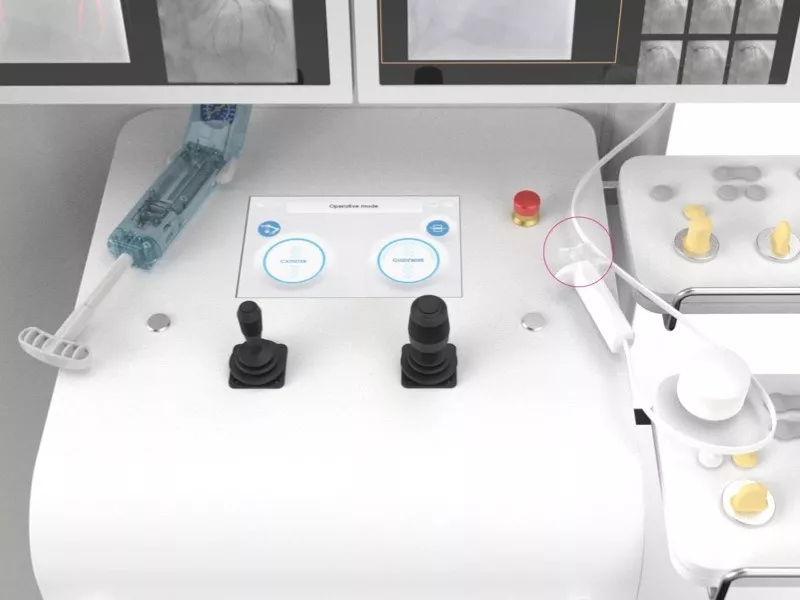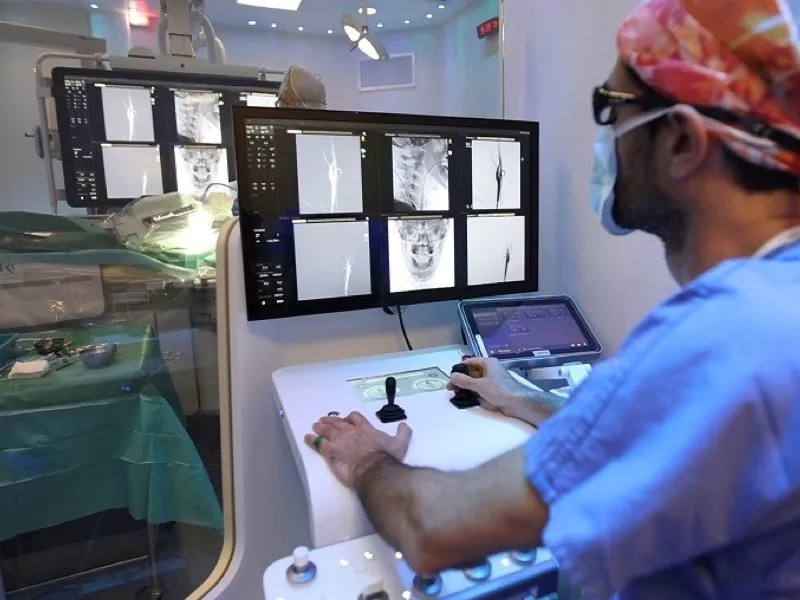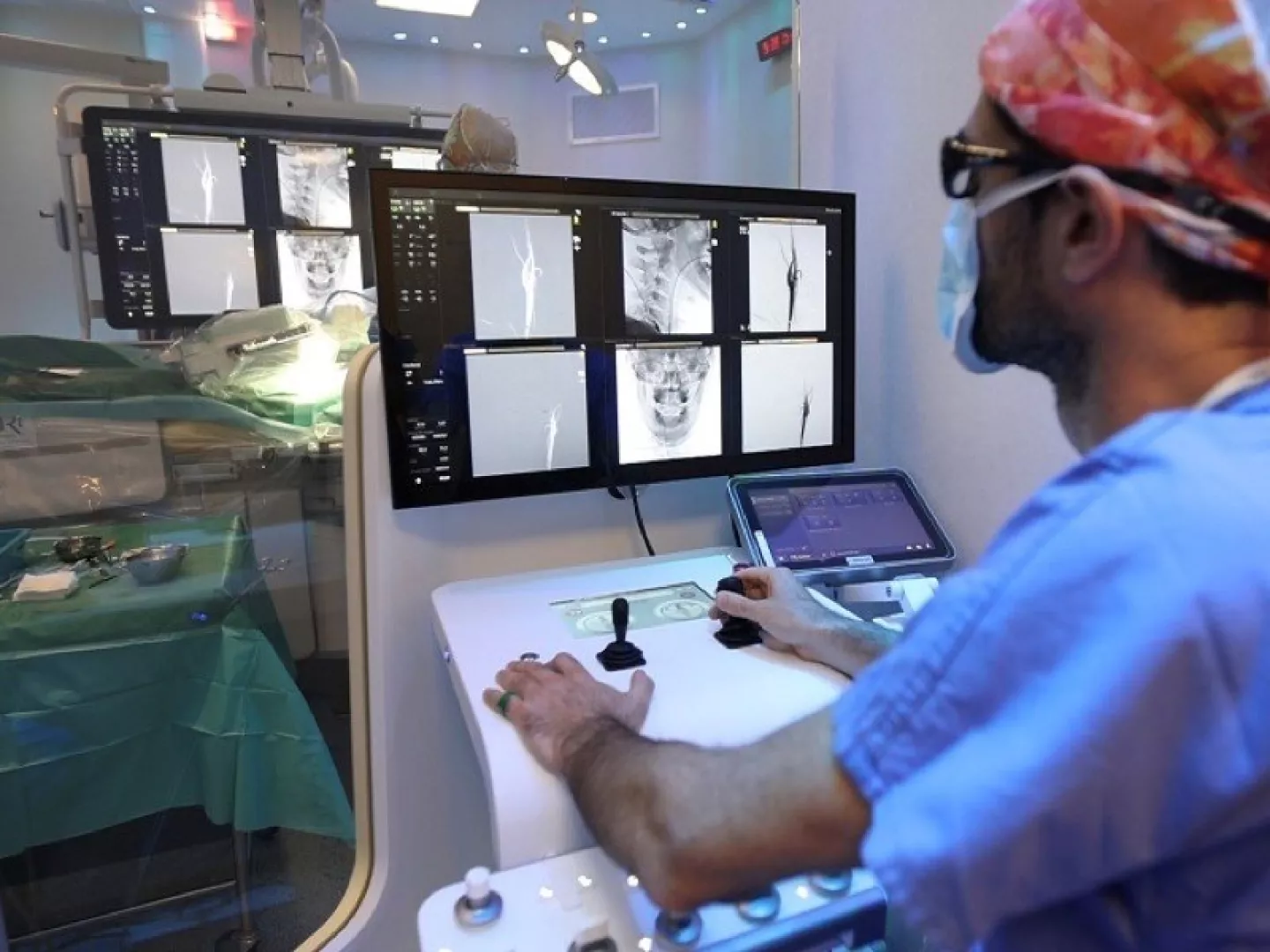The R-One™ is the first European robotic solution for percutaneous coronary intervention (PCI). Robocath aims to become a world leader in vascular robotics and develop the remote treatment of vascular emergencies, guaranteeing the best care pathway for all. The company is convinced that the future standard for minimally-invasive procedures is robot-based. Robocath obtained the CE-mark for R-One™ in February 2019 and is NEN-EN-IEC 60601-1 certified. With help from Althen’s HE3 Multi-Axis joysticks the R-One™ is designed to operate with precision.
Better treatment of strokes in the future
Physicians are able to perform a PCI procedures fully protected from radiations and with a high level of precision, facilitating and improving the treatment of the leading cause of death in the world: cardiovascular diseases. Neurointerventionalists can't be in every single hospital. It's therefore necessary to deploy this endovascular expertise everywhere. The robot could be the option to deploy this expertise by enabling treatment in local catheterization labs with the robot. While, remotely the neurointervantionalist could bring his technical expertise for navigation within the intra cranial vessels. We can easily imagine that endovascular robotics will allow better treatment of strokes in the future.
Protection from harmful X-rays
Until now cardiologists have been performing these operations manually. Using X-rays to see through the human body. Doctors carry out such operations while remaining in close proximity to their patients, but also to the source of the X-rays. Physicians therefore wear heavy lead aprons to protect themselves from these radiations. That makes their working conditions hard and difficult as radiations can induce serious diseases as brain tumors and cancers. Robotization enables physicians to operate while being protected from the harmful rays, behind a lead-lined screen, sitting comfortably, remaining close to the screens and able to carry out high–quality operations, all the while keeping themselves safe. The operation becomes simpler, easier and safer, benefiting the doctor’s concentration.




Accept the marketing cookies to view this video.
Click here to change your consent.
Intuitive and extremely accurate joysticks
One particular strength of the robot is that you can advance the guidewire or the stent/balloon through the coronaries thanks two joysticks, as if you were manipulating it with your own hands. The use of the robot is very intuitive. Navigation with the robot is accurate to the millimeter, which is crucial to be able to navigate in microscopic arteries. Guidewires and catheters which are used routinely are compatible with the robot, which makes things very easy for any physician. The joysticks reproduce all hand movements.

Accept the marketing cookies to view this video.
Click here to change your consent.
Multi-Axis Finger Joysticks from Althen
Two finger joysticks from Althen's HE3 series are designed into the R-One™. The controllers are designed for a variety of safety-critical applications with dual independent Hall Effect sensors. To ensure continuous operation and protection from dust and water, for example, the joysticks are at least IP67 sealed. One of the controllers has two axes and a lock button. The other finger joystick of the R-One™ has three axes and one button. Because the color red is normally associated with some kind of danger, the joystick's button color is black in medical applications.
At Althen, we offer standard industrial controllers and position sensors. We can also help you with a custom measurement or HMI solution such as the R-One™. Contact us to help you find the best solution for your application.
Precision and reliability
When precision and reliability are crucial, Althen Controls offers a comprehensive range of solutions for the precise control of devices such as medical robots. In this case, our advanced control technologies and expertise in robot control systems enabled medical professionals to develop and implement innovative and life-saving technologies. Wondering how our solutions can also enhance your projects and help achieve your goals?
Reach out to your technical expert
We supply standard joysticks, but we are also ideally placed to help you with customised products or a tailor-made solution.

